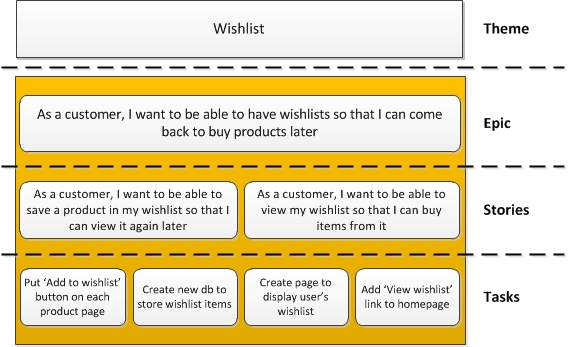Product Roadmaps: The Missing Piece in HR's Strategic Planning Puzzle - Part 1 of 2
How to leverage Roadmaps in your HR strategic planning
Summary
A roadmap is an essential component of a sound HR Strategy (a couple of examples here and here). In this article we’re going to try to learn about some of the best practices of the Product Management industry in that regard, and how we can leverage these for HR.
What are Product Roadmaps?
Product roadmaps are strategic planning documents that outline the vision, goals, and key initiatives of a product or project. They serve as a communication tool that aligns the product team and stakeholders around a shared plan for what will be built, when it will be built, and why it is being built. Product roadmaps can take many forms, but they typically include timelines, milestones, and feature releases. They are a valuable tool for product managers to prioritize work, communicate progress, and adapt to changing market and customer needs. Source: Product Roadmap Basics.
They are a powerful tool that product managers and teams use to plan, execute, and communicate their strategy for a product or service. But did you know that product roadmaps can also be a valuable asset for HR teams? By creating a roadmap that outlines their strategic initiatives, HR teams can align their goals with those of the company and create a clear plan for achieving them. In this article, we'll explore why product roadmaps are the missing piece in HR's strategic planning puzzle and how they can be used to drive HR success.
Key differences between Roadmaps and Delivery Plans
One key difference between a product roadmap and a delivery plan is that a product roadmap is the result of a strategic process, which focuses on outcomes, whereas a delivery plan focuses on outputs. A delivery plan outlines the tasks, timelines, and resources needed to deliver a specific feature or capability. In contrast, a product roadmap provides a high-level view of the product strategy, outlining the goals, initiatives, and milestones needed to achieve success. By focusing on outcomes, product roadmaps provide a framework for teams to make strategic decisions and prioritize their efforts based on the most impactful outcomes.
Author Saheed Khan illustrates it very clearly in his article Product Roadmaps vs Product Plans, using the following table of differences:
Roadmap vs Plan. Source: Saheed Khan’s article on Medium.
Best Practices
When creating a product roadmap for HR initiatives, there are several best practices that HR teams can follow to ensure success. First and foremost, it's important to involve stakeholders from across the organization in the roadmap development process. This includes not only HR team members, but also business leaders, managers, and employees who will be impacted by the initiatives outlined in the roadmap. By involving stakeholders from different areas of the company, HR teams can ensure that the roadmap is aligned with the company's overall goals and objectives and that the initiatives outlined in the roadmap will be relevant and impactful.
Another important best practice is to regularly review and update the roadmap to reflect changes in the business landscape. As the business environment evolves, HR teams may need to adjust their priorities or change the initiatives outlined in the roadmap. By regularly reviewing and updating the roadmap, HR teams can ensure that they remain aligned with the company's overall strategy and are able to adapt to changing circumstances.
In addition, it's important to communicate the roadmap clearly and consistently to all stakeholders. This includes not only sharing the roadmap itself but also providing regular updates on progress and milestones. By communicating the roadmap effectively, HR teams can ensure that all stakeholders are aligned and bought into the initiatives outlined in the roadmap.
Other best practices for creating a successful product roadmap for HR initiatives include setting clear goals and metrics, prioritizing initiatives based on impact and feasibility, and breaking down larger initiatives into smaller, more manageable projects. By following these best practices, HR teams can create a comprehensive roadmap that guides their initiatives and drives better outcomes for the business and its employees.
Themes, Epics, Stories, Initiatives
Following agile guidelines, the items included in a roadmap are frequently organized around themes, epics, and stories. Themes are the highest-level strategic initiatives, which can be tied to overall goals, Epics are large bodies of work that can be broken down into a number of smaller “stories”, while stories themselves are the smaller units of work. Note: in some cases, you will also see smaller units like tasks or features, which are part of a story. Or larger units like Initiatives that group several epics.
The main distinction between Initiatives and Themes is that Initiatives tend to have more of a hierarchical connotation in that they formally group Epics that belong within them. While Themes have more of a directional connotation in that they identify Epics that contribute to the same goal, even if they don’t necessarily belong together. Keep in mind that some tools (and some companies that use them) utilize these labels in a slightly different manner. As with any label, what is important is that it is used consistently.
To better illustrate this, here are some examples of how you could organize these:
Example from https://scrumandkanban.co.uk/theme-epic-story-task/
Or thinking of an HR example, it could be something like this:
Theme A: Growing the Marketing Department
Epic A.1.1: Filling the Open Positions for the Marketing Department
Story A.1.1.a: Hiring a Director of Marketing
Story A.1.1.b: Hiring a Content Marketing Manager
Epic 2: Upskill Existing team members
Story A.1.2.a: Complete Career Development Plan
etc
Coming up next
That’s a wrap for part 1!
In part 2 of this article, we’ll look specifically at where to apply roadmaps in HR, some examples of organizations using them, and some resources like tools and free templates.







